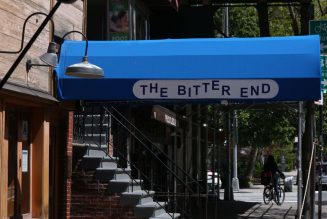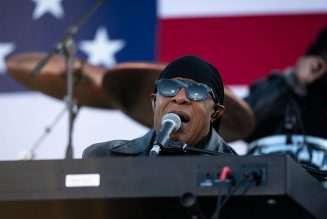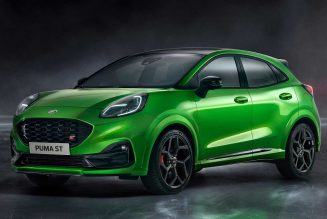“It’s all over,” I said to myself. I was in the passenger seat of Lucid Air car number 17. Why 17? Because it’s the last two digits of the car’s VIN. It’s an early enough build the steering wheel is from a Cadillac CTS because Lucid hadn’t started making steering wheels when car 17’s chassis was built. John Culliton, the senior mechanical engineer of chassis and vehicle dynamics who was giving me some hot laps around Weathertech Raceway Laguna Seca, had finally stopped simply telling me about how the Air is on the track and stomped the throttle. We were just before the apex of turn 5, and John’s foot unleashed all 1,080 horsepower in the Air. “This is the end,” I thought.
Not of my life—John’s pretty handy behind the wheel—but rather of the internal-combustion engine and its domination of racetracks. Since joining MotorTrend a decade ago, I’ve lived a ridiculously charmed existence, assuming you’re into riding shotgun with amazing drivers, folks like Walter Röhrl, Jochen Mass, David Donahue, Justin Bell, Jethro Bovingdon—the list goes on and on—and of course, Father Lap Time himself, Randy Pobst. I’ve been through turn 5 countless times—both as a passenger and as a driver—and I’ve never experienced anything like the way this Lucid hustled up that hill. Moreover, because of people who bought homes within earshot of a world-famous racetrack, the sound booth that yells at you for being loud is situated between turns 5 and 6. Yet I could scream “holy sh*t!” louder than the noise s generated by the dual-motor Air whooshing past at full wick. It’s a warm-up for the tri-motor model hitting the track in search of a new EV lap record; when it’s done, I head to a suite to observe the proceedings.
Efficiency Is Everything
“How many customers will ever use all 1,080 horsepower?” I asked Peter Rawlinson, Lucid’s CEO/CTO and the onetime chief engineer of the Tesla Model S, the vehicle that the Air must absolutely vanquish. “I wish we weren’t so powerful,” Peter explained, looking exhausted from answering questions like mine, noting that us journo types are focusing on the headline-grabbing numbers like all that power, the 9.9-second quarter-mile time, and the promised 500-plus miles of range. Instead, we should, he feels, turn our eyes to the true story of Lucid: efficiency. “We’re 17 percent more efficient than the long-range Model S,” he noted. Meaning that if Tesla wanted to match the Air’s range, Musk and friends would likely have to add a 17 percent larger battery, adding weight. If Lucid wanted to drop the Air down to Tesla’s range, they could remove 17 percent of the batteries. “Efficiency is the key to everything, Peter continued. “And the Long Range [Model S] isn’t the performance one. With our car you get both.”
What about Tesla’s Battery Day announcements? Specifically, the one where Elon Musk announced that the Long Range Model S’s range is going to be 520 miles? Battery Day took place a full week after I was at Laguna Seca with Lucid. However, we talked about what might be announced. Rawlinson was prescient, stating that when Elon makes his expected claim that of beating the Air’s impressive 517-mile range number, Lucid will be completing the paperwork to the get a special correction factor from the EPA, seemingly magically improving the Air’s range to 550 miles. Huh? Long story told very quick, the EPA has five different dynamometer cycles at its disposal to determine a vehicle’s EPA ratings. Often, only two are actually used—UDDS (a city cycle) and HWFET (a highway cycle)—and a correction factor of 0.7 is used to estimate the other three (cold start, with air conditioning, and high speed). Tesla was able to successfully petition the EPA to use a different correction factor—0.75—giving its cars better EPA MPGe numbers, but much more crucially, high range results. That’s how 517 miles will increase to a Model S Long Range beating 550 miles. Lucid’s new number will still be five percent more efficient. Put that in your Joe Rogan joint and smoke it, Mr. Musk.
Three Motors Is Better Than Two
The tri-motor car has just finished a lap—”1:32.75,” a black-clad Lucid employee shouted up to the suite. Anything in the 1:32 range is quick, that much I know. I also know our man Kim Reynolds witnessed a lesser version of the Air tri-motor pop off a 1:34.2 lap during his time observing a real-world range test, which is as quick as an Audi R8 V10, but not even in the top 20. Once I checked the MotorTrend lap record list, I saw that the newer 1:32.75 time was good for eleventh place all time. “Four seconds,” Rawlinson stated out loud, seemingly to himself. “That’s four seconds quicker than the Tesla!” Rawlings was referring to a Model S Plaid prototype’s time of 1:36.55 (allegedly on slick tires that won’t be available to customers).
To those of you who haven’t wasted years of your life timing cars running around racetracks, four seconds is a huge gap. Strike that—two seconds on a two-mile circuit is a huge gap. Four seconds means the two cars might not even be allowed to race on the track at the same time. Oh yes, Lucid has a tri-motor Air. Total horsepower? I’m never sure; I keep hearing numbers like 1,300 or 1,400 horsepower. Then Peter tells me no, it’s 1,300 horsepower for just the rear wheels. Makes sense, as each of Lucid’s miniaturized motors has the potential to make 670 horses; times two, that’s 1,340. Another motor on the front axle, and well, that’s the knocking on the 2,000-hp door, if not kicking it open.
I asked five different Lucid employees for an actual number. The five different answers I received is indicative of them just not knowing the final answer. While the Dream Edition dual-motor Air is mere months away from hitting customers’ home charging ports, the tri-motor is a year out at least. To call this car—VIN number 22—a prototype is being generous. Lucid had previously run car 22 at Laguna, but on 265-width front, 285-width rear Pirelli P Zero tires. I’m looking at a fat, sticky set of 325/35/21 Pirelli Trofeos on the rear, whereas the fronts are now 285s. Hence the 3D-printed widebody panels that barely contain the new meats. It’s reminiscent of the Dodge Charger Hellcat Widebody—only with nearly three times the power!
I never did get a ride in the tri-motor Air, but I did observe two things from the various dual-motor rides I got around the track. One is that Lucid simply doesn’t have the brakes needed to whoa down a car with this much gumption. I got into a conversation with Eric Bach, Lucid’s vice president of hardware engineering about what sort of watch Lucid is. He had a gorgeous IWC chronograph hanging on his wrist and I figured I could use my horological knowhow for good instead of (according to my wife/accountant) evil. “A Sinn,” he answered. Sinn’s an under-the-radar German watchmaker that ruthlessly innovates for the sake of innovation. I pointed to the Sinn on my wrist and said, “Good choice!” Bach went on to tell me about the Air’s revolutionary headlights for the next 20 minutes. They’re that advanced. Motors, batteries, chassis architecture, headlights—I agree with him that Lucid is about as innovative a car company as I’ve ever seen. However, the brakes were simply plain old electric-car brakes, not even fancy carbon-ceramic stoppers like you can get on a Porsche Taycan. I feel they’re losing seconds a lap because the drivers are having to brake much earlier. Lucid must innovate here.
Then there are the drivers—all of whom are nice guys and pretty quick. Though I’m a nice enough guy (say at least a few people) and pretty quick myself, I know Randy Pobst’s line around Weathertech Raceway well, and additional seconds are being left on the tarmac. For instance, a few years ago Laguna laid down some green asphalt outside of the rumble strips at turn 6. When Randy laps cars, he apexes by placing his tires on that green pavement. In other words, off the track. Dangerous? Absolutely. I asked him about it and I’ll never forget what he told me. “Jonny, if they lay down extra pavement, a race-car driver is going to use it.” Laguna also added more asphalt to the inside of the Corkscrew. Lucid’s drivers were going the long way around. Again, they’re engineers, not pro drivers. Could the tri-motor Air drop three or four seconds with proper brakes and a pro driver? I’d bet yes. Lucid seems to be leaning the same way.
That Pesky Elon
I had to leave the track around 2:00 p.m. to catch a short flight back to Los Angeles. When I landed, I received a text from Lucid’s PR team. “We just did a 1:31.34.” I checked my list, and that’s good for ninth place all time, ahead of a Dodge Viper ACR (1:31.58) and a few tenths behind a Porsche 918 Spyder (1:30.97). Pretty incredible for a wires-hanging-out-all-over-the-place early mule. And this would have been an absolutely incredible lap-record story if not for the aforementioned Battery Day, where Musk announced that Tesla’s own tri-motor car, the Model S Plaid, just ripped off a 1:30.3 lap. That’s six seconds quicker than the Plaid’s previous attempt. Is the Tesla running slicks? Probably, and knowing how Elon likes to interpret numbers, the 1:30.3 is probably 1:30.399 off the VBox, but still. That’s legit quick, enough so to be eighth on our all-time Laguna laps list. Both companies, both Lucid and Tesla, and the industry as a whole, are just getting started. As I said before, it’s all over. And the new beginning—for EVs and lap times—is off to an incredible start.










